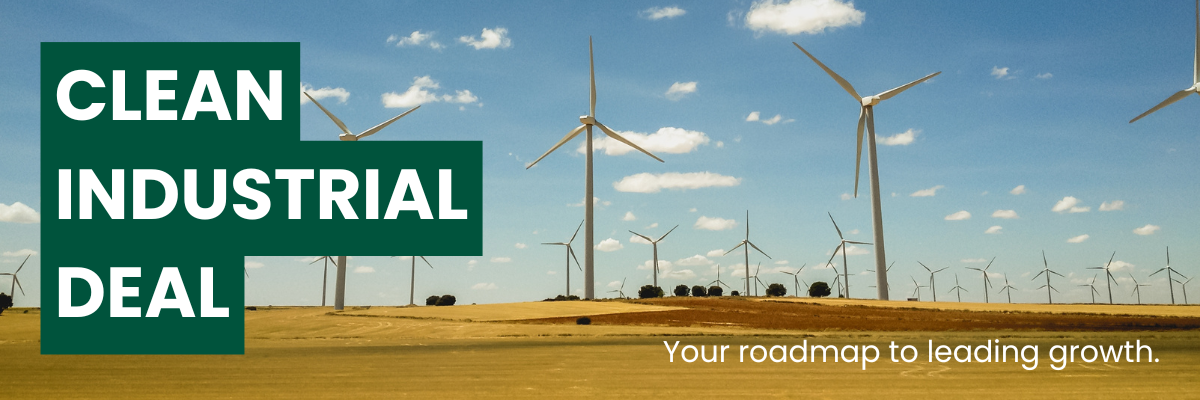
Written by Marc Lütz
Dear reader,
COP30 has come and gone and Brussels is now dealing with its aftermath. The summit in Belém delivered far less than the EU had hoped for. There was no UN level roadmap for phasing out fossil fuels, limited progress on global responsibility sharing, and negotiations were dominated by oil producing and emerging economies. Even with a reaffirmed 1.5°C goal and the launch of the “Belém Mission”, the EU returned with fewer wins than expected and sharper political debate. Several Greens and EFA MEPs openly questioned the credibility of the process.
In Brussels, the policy machine continues to shift. The Commission is reconsidering how strict recycled content rules should be in the upcoming circular economy mini package, with recyclers and industry groups pulling in opposite directions. EUDR implementation remains unsettled as Member States debate delays and simplification measures while Parliament pushes for a longer transition. At the same time, new water resilience dialogues and warnings on green industry investment highlight the widening scope of the EU sustainability agenda.
As this is our final edition for 2025, we take stock of the trends that will shape early 2026. These include the outcome of COP30 and the regulatory decisions that will define Europe’s climate, circularity and industrial strategies.
The Sustainability Newsletter will return in February 2026.
Europe’s bold plan for sustainable growth, the “Clean Industrial Deal”, represents a major shift for EU businesses, especially in energy-intensive sectors. Don’t miss your chance to engage with the Commission to shape this deal and influence the policy direction for the next five years.

The spotlight
COP30 results in disappointment for the EU
On 22 November, the COP30 climate summit in Belém, Brazil, came to an end. The outcome of this summit fell noticeably short of what the EU had hoped to achieve. Negotiators were unable to secure a commitment to a UN-level roadmap for phasing out fossil fuels, one of the core objectives of the EU going into the summit. According to EU chief negotiator Jacob Werksman, discussions did not take place following the usual rich-poor divide between nations but rather centred on more fundamental questions of pacing and responsibility. The EU found itself isolated against a coordinated group of oil-producing and emerging countries, and over 1.600 fossil-fuel lobbyists.
Despite this, there were some small successes. The final declaration, namely, reaffirmed the 1.5°C temperature goal of the Paris Agreement and launched the “Belém Mission to 1.5” to accelerate national climate planning. In addition, COP30 President André Corrêa do Lago announced a fossil fuel phase-out roadmap outside the official UN framework.
Several members of the Greens/EFA group argued that the summit failed to confront the core issue: ending fossil fuel dependence. Ahead of the summit, Lena Schilling (Greens/EFA, Austria) already warned that the credibility of the COP process is eroding and that the EU itself is struggling to meet its own climate deadlines. After the first draft conclusions emerged, Greens/EFA President Bas Eickhout (Greens/EFA, the Netherlands) said the draft was so weak that “no deal would be better than a bad deal,” pointing to the widening gap between global pledges and the emissions cuts required to keep 1.5°C within reach.

Impact analysis for your business
Our free updates keep you informed, but is that enough? With our tailored sustainability updates you’ll receive:
- Custom insights on how upcoming policy changes might impact your business;
- Strategic advice from your dedicated policy consultant on how to turn challenges into opportunities;
- Early warnings about key legislative developments.

Policy updates
Commission sets out new Strategic Framework for the EU Bioeconomy
The European Commission has published its Strategic Framework for a Competitive and Sustainable EU Bioeconomy, updating the 2012 strategy and expanding its reach across agriculture, forestry, aquaculture, biomanufacturing and a wide range of bio-based industries. The aim is to reduce reliance on fossil-based and imported raw materials by scaling up bio-based innovation, creating lead markets for bio-based materials, and promoting sustainable biomass use. The strategy places particular emphasis on residues, by products and organic waste, alongside new support measures for investment, regulation and market uptake.
The framework signals renewed political backing for bioenergy from residual and secondary biomass streams, while stressing that biomass is a finite resource that must be sourced within ecological boundaries.
Parliament approves sustainability omnibus bill after centre right aligns with far right
The European Parliament has adopted the first sustainability omnibus simplification package after the European People’s Party joined forces with right wing and far right groups to secure a majority. The vote raises political questions for the rest of the mandate, as the EPP chose to proceed without its traditional centrist partners in order to push through a deregulation agenda centred on cutting reporting obligations.
The bill significantly raises the thresholds for corporate sustainability reporting and due diligence requirements, meaning that fewer companies will fall under EU environmental disclosure rules. It also removes mandatory climate transition plans from due diligence legislation. Although most Renew and Socialists and Democrats MEPs opposed these changes, several members from both groups broke ranks and sided with the right, underlining divisions within the centrist bloc.
Commission weighs recycled-content rules ahead of circular economy mini-package
Ahead of the Commission’s circular economy “mini-package,” internal discussions are intensifying over whether producers should be allowed to count recycled plastic sourced outside the EU toward upcoming recycled-content targets. European recyclers warn that this could undermine an already struggling sector, while industry groups are pushing for “mirror clauses” to ensure imported recycled material meets EU standards.
Commission officials signal a preference for prioritising EU-recycled plastics, but note that WTO trade rules must be respected. The issue has also surfaced in negotiations on recycled-content requirements for the automotive sector, underscoring its broader relevance across EU circularity policies.
State of Play: EU moves forward on EUDR simplifications, but timing remains uncertain
The future implementation of the EU Deforestation Regulation remains in flux. On 12 November, an informal COREPER vote failed to secure a qualified majority for the Danish Presidency’s compromise text, with several Member States pushing for a full “stop-the-clock” pause on implementation. Others, including Germany and Sweden, circulated proposals for a one-year delay, lighter rules for small operators, reduced traceability requirements, and the creation of a “no-risk” country category.
Meanwhile, the European Parliament has now adopted its position. On 20 November, MEPs voted to grant all companies an additional year to comply, delaying obligations for large operators to 30 December 2026, and for micro and small businesses to 30 June 2027. MEPs also backed simplified due-diligence requirements, placing the main reporting burden on the first operator placing the product on the EU market, and allowing micro and small operators to submit only a one-off simplified declaration.
Parliament also called for a simplification review by April 2026 to assess administrative burdens. It is now ready to start negotiations with the Council.
Commission launches dialogues with Member States on water resilience
On 11 November, the European Commission has launched a series of Structured Water Dialogues with Member States to accelerate progress under the EU Water Resilience Strategy. The dialogues, running from 2025 to 2027, aim to help countries meet EU water legislation objectives and improve management of water quality, flood risks, and scarcity.
With only 40% of EU surface waters in good ecological status, the initiative seeks to strengthen collaboration and ensure compliance with the Water Framework, Floods, and Marine Strategy Directives. Outcomes will guide national actions toward achieving EU water resilience goals by 2027.
EEA: Green industry investment needed to sustain EU climate goals
On 7 November, The European Environment Agency (EEA) briefed that Europe must rapidly scale up investment in clean tech and green industry to stay on track for climate neutrality by 2050. With public budgets under strain, private finance will be essential as the Green Deal requires over €500 billion annually by 2030.
The EEA highlights the Net-Zero Industry Act as a key step toward a new EU green industrial policy, helping boost net-zero manufacturing capacity and maintain momentum in the sustainability transition.

Events
Looking to stay ahead of the curve on Brussels’ biggest sustainability and waste debates this month and beyond? Here’s your must-attend line-up of conferences, policy roundtables, and networking events: where policy meets practice.
3-4 December – Housing Europe: Decarbonisation Summit (BIP Meeting Centre, Brussels)
Housing Europe organises this Summit to consider different paths to decarbonisation which maintain the goal of liveable neighbourhoods and affordability. The Summit will link with the EU policy and financial framework just ahead of the launch of the Affordable Housing plan, the deadline for re-allocation of Cohesion Funds for Housing, the roll out of the Social Climate Fund (SCF) and the implementation of the revised Energy Performance of Buildings Directive (EPBD).
4 December – European Bureau for Conservation and Development: Activating Lead Markets (European Parliament, Brussels)
Representatives from the European Parliament, the European Commission, energy-intensive industries, and civil society convene to engage in an open dialogue on the design of effective European lead markets for low-carbon products to discuss the policy measures to unlock demand across industrial value chains and how complementary initiatives can support the Industrial Accelerator Act’s objectives.
8 December – European Commission, the Committee of the Regions and the Economic and Social Committee present: Water Resilience (Jacques Delors Building, Brussels Brussels)
The first Water Resilience Forum will bring together policymakers, scientists, industry leaders, and civil society to chart the path toward a water-resilient EU by 2050.
9 December – European Bureau for Conservation and Development: The new EU Bioeconomy Strategy and forest-based industries: A Europe-grown success story (European Parliament, Brussels)
The MEP Group on ‘Climate Change, Biodiversity and Sustainable Development’, taking place around the release of the EU Bioeconomy Strategy under the Clean Industrial Deal, comes at a pivotal moment when the bioeconomy can play a key role via becoming a cornerstone of the EU’s green growth strategy.



